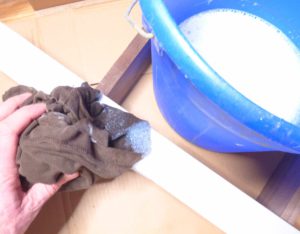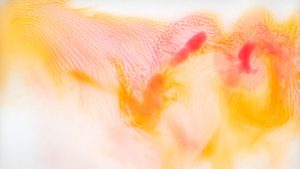In this lesson, you will learn how to dip your brush into the paint and begin the artistic journey with below-mentioned step by step guide on Canvas painting for beginners. Let’s start.
Introduction to Canvas Painting
Painting unleashes hidden creativity, builds up your confidence, self-esteem, a not so common yet significant enough skill set, and fosters cognitive abilities. It’s well-proven that doing painting and creating art pieces affects your mind in all the right ways.

Yup! it helps clarify toxic feelings, provides utmost mental peace, and let you immerse into a state where only you and your Canvas exists. During pandemic times a lot of people explored this hobby of them and now it’s the time for you to do the same.
Let me bust this myth for you that canvas painting is only meant for extraordinary artists as this is extremely wrong because even a beginner can be a top-notch canvas painter. All you need is the right kind of brushes, colours, wooden wedge, Canvas and most importantly the technique.
In this lesson, you will learn how to dip your brush into the paint and begin the artistic journey with below-mentioned step by step guide on Canvas painting for beginners.
How to choose the right canvas for painting?
Canvas is something that holds your masterpiece so picking the right choice can do wonders and also enhance the painting.
Choosing the right canvas fabric
Generally, there are two types of Canvas- linen and cotton where the former one is preferred quality-wise as it provides a smooth surface and also is sturdy enough but at the same time can be quite expensive. Therefore, beginners should always go for cotton Canvas which after priming becomes smooth as well.
Choosing the right canvas size
The question of the right size Canvas must be bugging you. But don’t worry here’s the solution as you are a beginner Canvas should be of smaller size as there are dual benefits attached to it first, working on small Canvas is less complicated than those king-sized ones, and Boom! you are good to go.
Second, small-sized Canvas consumes less time relatively and thus you don’t have to wait till ages in order to finish your very first professional canvas painting.
So now you can easily keep your impatience in the side bag and get your well-curated canvas painting in no time. Later you can progress to large-sized ones.
How to prime a canvas?
In order to get the professional touch Canvas needs to be primed and you simply cannot afford to give second thoughts to it. The best way to begin canvas painting is by priming the Canvas itself as it not only makes the painting look extremely beautiful and lively but also increases its durability over time.
Primers are of utmost significance for making the canvas painting look sharp, edgy, as well as the tone of colors is better reflected on it. It helps against Natural Corrosion of some paints and it is the primer that builds a barrier between the two.
Choosing between Acrylic and Oil Paints?
The term ‘colour’ is synonymous with painting to a very large extent. Most people take up painting to play around with colours and get succumbed to their beauty. However, while beginning the canvas painting it often becomes daunting as to which colour one should pick but worry not here is a colour guide for you.
Oil Paints
They have always been the first choice of traditional artists as it takes a lot of time to get them dry ranging from 2 to 5 days giving room to corrections. As artists have much time at hand to make desired modifications as well as blending these paints were extensively used by classical painters and even now people prefer them to give that professional Vibe.
Acrylic Paints
They are much modern comparatively. However, as a beginner, you can opt for acrylic colors as it dries up relatively faster and you don’t have to wait for long enough in order to see your art piece getting fully accomplished. They are also very beginner-friendly as well as water-based and provide required consistency.
Check the detailed lesson on Acrylic vs Oil Paints.
Brushes Can Make A Difference
The significance of brushes can never be denied when canvas painting comes into play as they are the medium through which the color finds its way to Canvas.
Therefore, picking the right kind of brushes extremely essential. There are two types of brushes Bristle ones which are harder and Sable which is softer. Now in this context experience and practice is the best teacher as this is going to make you realize over time that which works for you the best.

As you are a beginner don’t refrain from trying a diverse variety of brushes as the more you’ll explore the faster you’ll get your perfect fit. Try to use a large-size brush instead as they divert you from being superconscious about details and then will let the creativity flow.
Never Go Wrong with Background
Keeping the background white looks unnatural and plain. Therefore, in order to make it more surreal and natural, paint the background with the ground color as it is closer to reality.
With the pop of color, a plethora of textures can be added to the Canvas as well. To do that you don’t require any professional equipment rather all you need to do is rummage around your home and find random stuff such as plastic, sponges, bubble wrap, etc.
They can help transform the simple background into an appealing and lively one.
Level Up the Game with Wooden Wedges
Just imagine you are painting on your Canvas and finding it extremely arduous to keep it stoic and in place. If the Canvas is dangling throughout then the final painting will look quite different from what you expected it to be. So, what to do in such a situation?
I would suggest it’s always better to lay your hands on wooden wedges to get rid of this problem. Wooden wedges keep the Canvas tight by hammering it on itself. From the internal corners, it is fixed properly to get a good grip while painting.
Correct the Change in Color Tone
Once you are done with painting the Canvas and get it dried up you often observe that some shades have become darker and their tone also changes making your canvas painting look different and all your efforts that you put up ultimately go in vain.
It only happens with acrylic and poster colors and not in the case of oil Paints. One way to avoid this problem is that before you begin painting on Canvas try some color shades on the side and see how their tone has changed.
And then use the colors which remain the same and for those which get darker, you can instead pick the lighter shades so that once they dry you get your desired art piece in proper hue.
Be Careful While Drying the Canvas
As oil canvas painting takes a great deal of time to get dry up it’s always better to keep a vigilant eye on it and that can be done by keeping it in a safe place and position. Even a slight touch can ruin your canvas painting.
Also, make sure you don’t keep your painting in direct sunlight as exposure to that can make it dull. Of course! We don’t want that. Therefore, let the canvas painting take its time to dry organically.
When it comes to canvas painting there are no hard and fast rules as at the end of the day it’s all about creative flair and personal flow. So, if you are on the fence don’t hesitate to give this exquisite art a try. All the best!
Share with your friends






